If you asked me what was in my pantry that is a surprise unsung hero, I would most definitely say Shaoxing wine. Shaoxing wine is the not so secret ingredient that adds an authentic flavor to all of our Chinese dishes.
You know how sometimes you eat Chinese food, whether it’s takeout or fine dining, and it’s really really good and you can’t quite put your finger on it? Maybe you’ve suspected it’s MSG? It’s actually not; most likely that flavor you can’t identify is Shaoxing. Or if you cook Chinese food at home but feel like it’s missing that special something compared to restaurant Chinese food, it’s probably Shaoxing wine.
What is Shaoxing wine?
Shaoxing is a type of Chinese rice wine. In Chinese it’s called 绍兴黄酒 or Shaoxing huang jiu, which translates to Shaoxing yellow wine. The Shaoxing part of it refers to the city of Shaoxing, which is in the Zhejiang Province which is famous for rice wine. Shaoxing has a very long history, both as an alcoholic beverage and as a cooking wine. It’s made from fermenting brown glutinous rice, water, and a tiny bit of wheat. Shaoxing wine has a clear, translucent golden amber hue.
Do I need it?
If you’re a fan of Chinese food and the Chinese food you’ve been making at home feels like it’s missing something, then yes, I recommend getting a bottle! It’s fairly cheap (although very expensive versions exist), it lasts a long time, and it’s an ingredient you’ll use again and again in Chinese food and once you start cooking with it you’ll ask yourself how you ever lived without. It’s as unthinkable as cooking Italian or French food without wine, or Japanese food without sake and mirin.
Shaoxing wine substitute
The best substitute for Shaoxing wine is dry sherry. Use it as a one-to-one sub.
Where to buy it
You can buy it at Asian grocery stores or online. Some well stocked supermarkets might have it in their Asian aisle. Depending on the laws where you live, the best place to find a good unsalted one might be a well stocked liquor store.
Should I buy salted or unsalted?
Unsalted is the one you want! Check the label, it shouldn’t have any salt in it. They sell salted Shaoxing as way to label it as cooking wine so it doesn’t have to be exclusively sold in liquor stores. Salted Shaoxing is super salty and won’t add that delicate flavor you’re looking for. If it’s what you can find, go for it, but you should reduce the salt in the rest of your recipe.
Not this one:
The best Shaoxing wine brand
Our favorite brand of Shaoxing wine is Pagoda Huadiao Rice Wine No Salt. It’s been around forever. You can also get a salted version on Amazon. If you somehow have a great selection at the Asian grocery or liquor store, as with most things, the more expensive the bottle, the better the product, and unsalted is always better than salted.
Shaoxing vs mirin
Compared to mirin, Shaoxing is less sweet and has a completely different flavor profile. In a pinch, you can substitute mirin.
Non alcoholic substitutes for Shaoxing wine
If you don’t do alcohol, I recommend using chicken broth as a sub.
What does it taste like?
It’s kind of hard to describe but it tastes lightly sweet, nutty, earthy, and complex. It’s incredibly aromatic.
Is it the same as rice wine?
Shaoxing is a rice wine so, yes. But if you’re asking if Shaoxing and sake are the same, the answer is no. Can you use sake as a sub for Shaoxing? Yes, but just know that it won’t taste exactly the same.
How do I store Shaoxing wine?
Keep it in a cool dark place. We keep ours in our pantry. If you have space you can store it in the fridge, but it’s not necessary.
What dishes use Shaoxing wine?
Shaoxing adds depth and complexity to Chinese dishes. It’s used as a marinade or in braises, or as a flavoring component to soup, meats, veggies, stir-fries, and dumplings. Shaoxing is in:



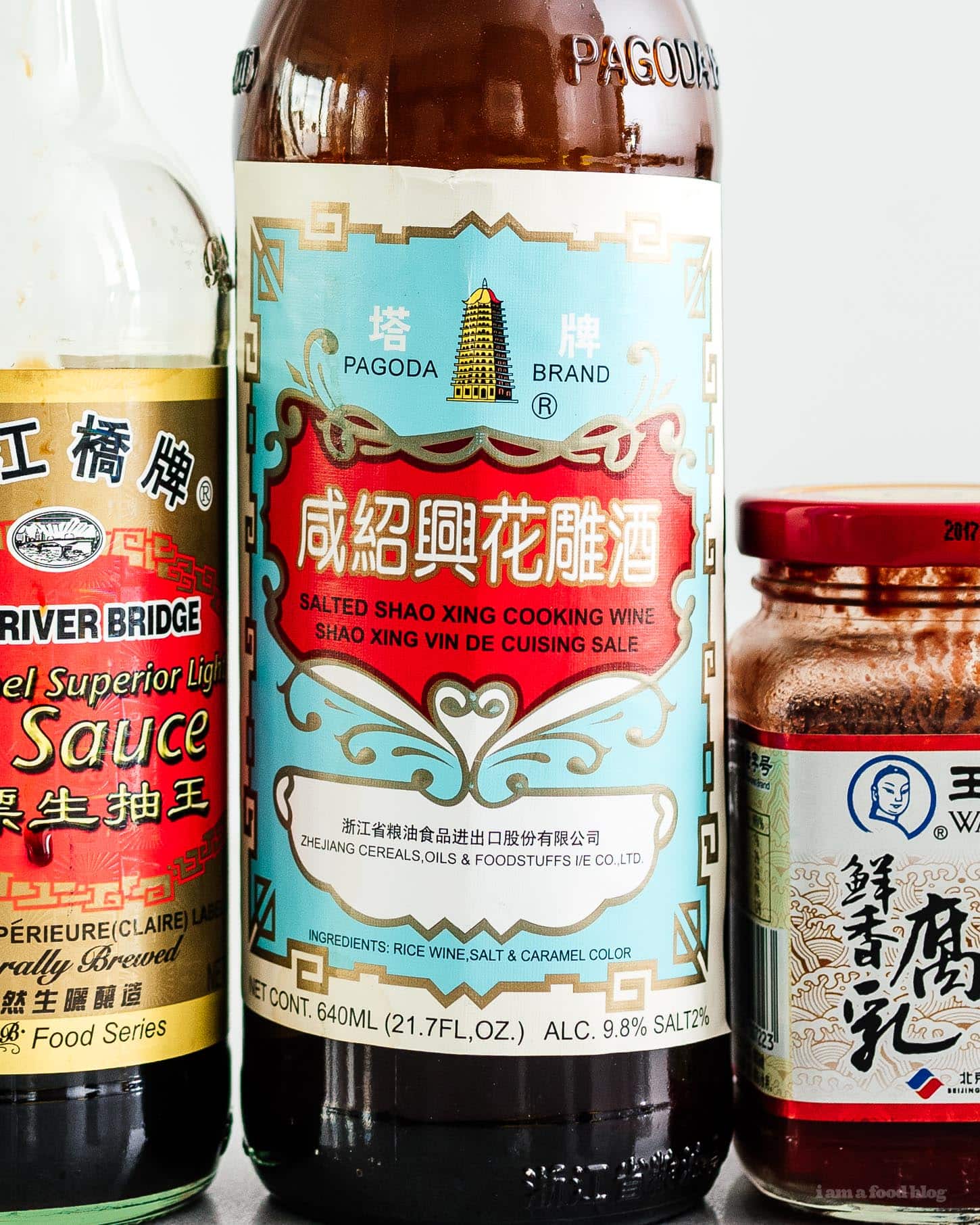
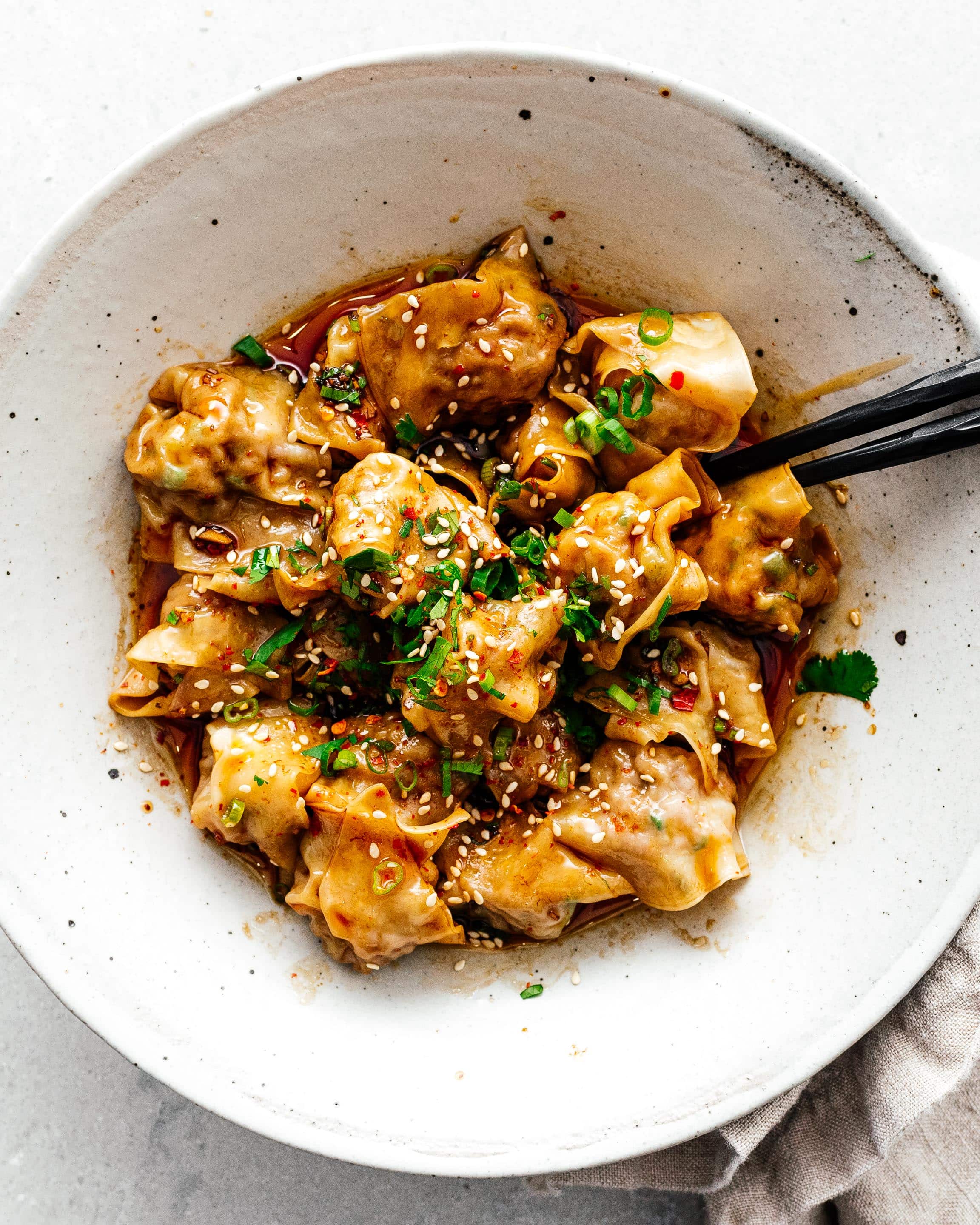
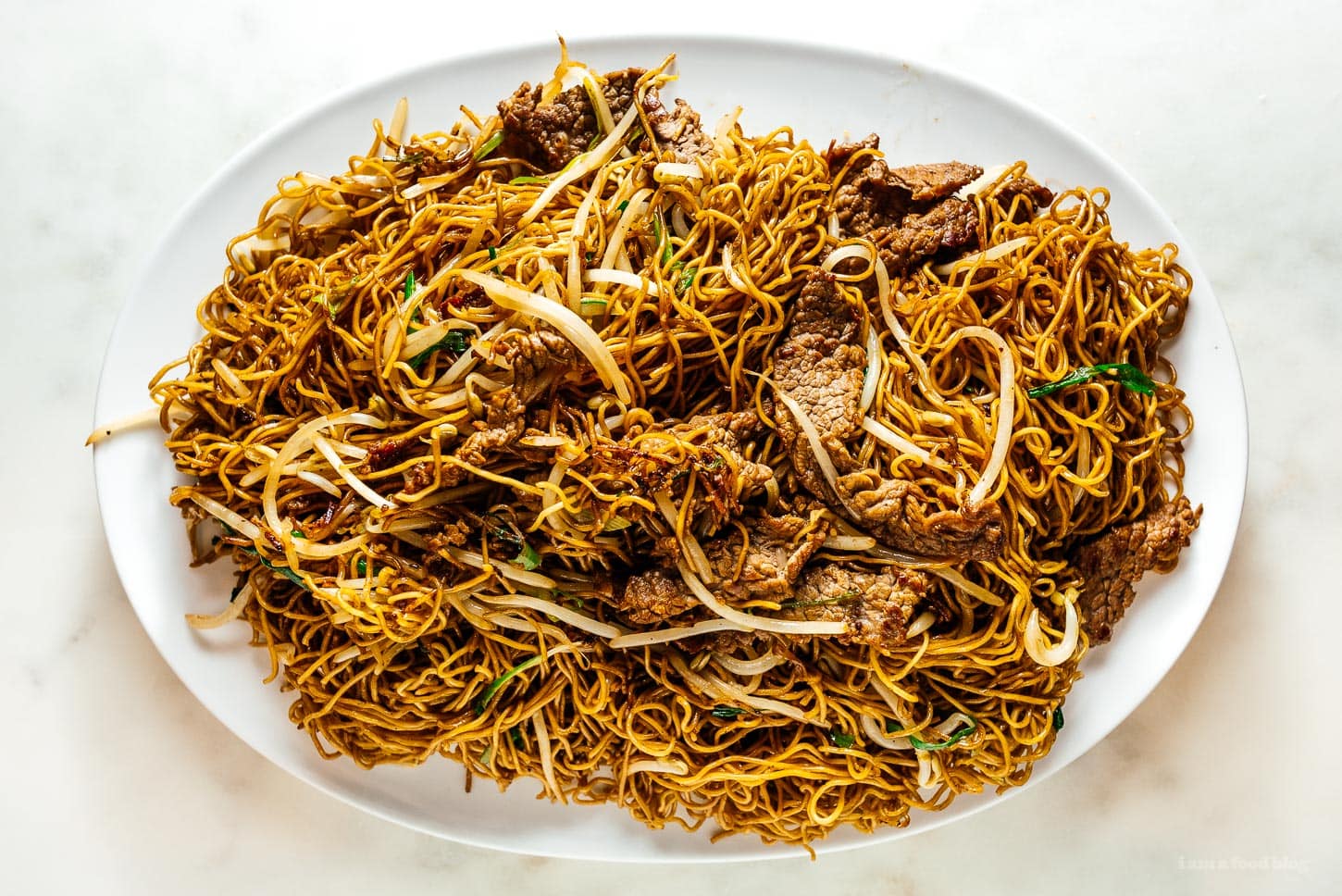

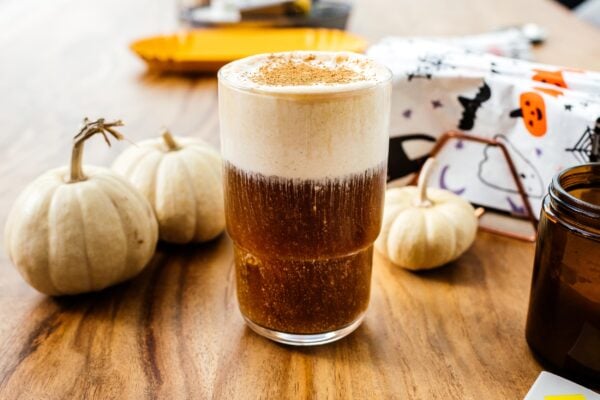
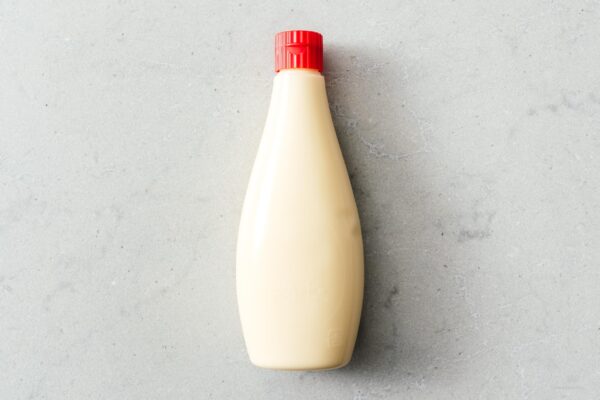
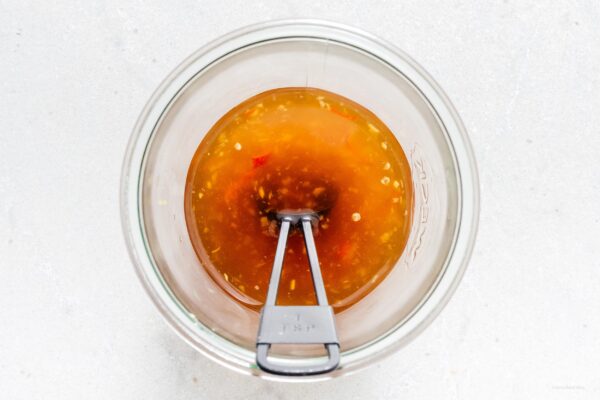
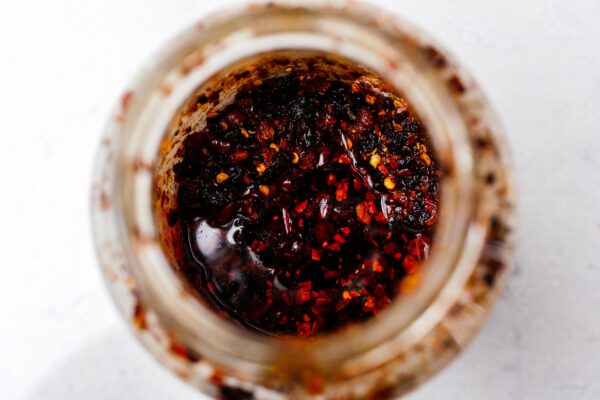
Hi, is that first picture of Shaoxing wine you’ve made? I’m planning on making some soon and I’d be really interested to hear about your method if so.
hi helen,
we just moved it to another bottle, we’ve never made our own!
Help!!
I bought a bottle of Chinese cooking wine by mistake. It was very light almost no color and contained yeast.
What is this? Thanks!!
hi joe,
it’s hard for me to say, but it might have been a shaoxing-flavored cooking wine or it could be a yeast free cooking wine :)